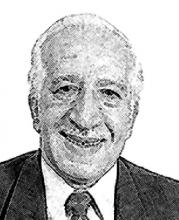You are here
Syrians offered untenable solutions
Mar 12,2016 - Last updated at Mar 12,2016
A shimmering mirage was offered last week to the Syrian people by the United Nations envoy Staffan de Mistura when he spoke about a federal structure for future Syria.
He was keen to engage the Kurdish People’s Defence Units in the forthcoming Geneva negotiations.
With 250,000 people killed and 11 million forced to flee their homes, Syria is already divided into sectarian and ethnic zones.
The northern towns of Qamishli and Kobani, in the Rojava district, are virtually under the control of the nearly 50,000 Kurdish fighters supported by Washington.
The coastal towns of Latakia and Qirdaha benefitted from the Russian bombing to cleanse non-Alawites from the region that hosts Russia’s two air bases and one naval strategic base.
The Druze managed to secure their villages in the Golan Heights by combining their traditional prowess in diplomacy with military might.
The northern Hama, Idlib and Aleppo are under the control of Division 13, a member of a wider coalition supported by the United States and Turkey that has been battling Assad forces with its 2,000 fighters.
According to the Institute for the Study of War in Syria, there are 60 different militias operating in the country, with a fighting force of 50,000 to 90,000 Sunnis.
None of these groups will accept de Mistura’s mirage of a new constitution or a new governance system, or a new election law.
They want Damascus back to its Sunni banners and Bashar Assad out of the political process and into Latakia province.
They consider other proposals as more procrastination, just a way to extend the life of a regime that lost all legitimacy.
Supporter of the regime, Iran, suffered lost 357 people in Syria; Hizbollah had 859 casualties.
Russian heavy bombardment ensured that many provinces are exclusively of one sectarian/ethnic colour.
A federal structure in Syria might help retain the territorial integrity of the country and requires a very loose centre and a great deal of autonomy for the different region. But it is this political recipe of decentralisation that led to the fall of Iraqi Mosul to Daesh acceptable?
In the Aleppo region, Jabhat Al Nusra, an Al Qaeda affiliate, with its 10,000 mujahedeen is not the largest of the 60 factions, combating Russian, Iranian and Alawite groups. A more dominant force is Ahrar Al Sham that boasts 20,000 fighters and a strong connection to Gulf countries and moderate capitals.
Both Ahrar and Nusra will immediately reject a proposal for a federal structure or decentralised regions. Their objective is a new Sunni Syria without Assad in Damascus.













